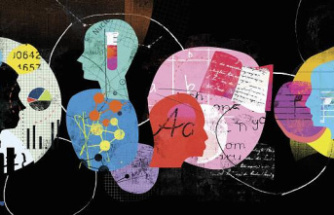Their analysis revealed that an additional 3.7 million children fell into poverty in January. The national child poverty rate jumped to 17% in January, compared with 12.1% December. This is the highest level of poverty for children in America since 2020, according to the researchers. The study revealed that 12.6 million children lived below the poverty line in total as of December 2018, compared to 8.9 million in December.
Experts in anti-poverty warned that the ending of the monthly payments could have a devastating effect on millions of children. The enhanced CTC was terminated by the Build back Better Act on December 31. This bill would have allowed for a $300 monthly payment per child. Families said that this money helped them to pay rent and food.
"It's been hard"
CBS MoneyWatch heard from one mom that she had to stop receiving $500 monthly CTC payments for her family.
"It's been hard -- we have less food on our table," Meighen Lovelace, a mother in her 40s, said. She lives in Avon, Colorado with her daughters, 10 and 14. "I have not been able to obtain all my daughter's medication. Some of the medications aren't covered under insurance so we have not been able buy them.
She said, "And we turn down our heat and wear our sweaters to reduce our heating bills."
Lovelace stated that one of her daughters has a disability which means she spends a lot of time caring for her children, which restricts her ability to work. She said that although the CTC checks allowed them to pay essentials such as rent, gas, and medicine, the family's financial position has been unstable since the checks were ended.
Lovelace stated that it is not only the money, but also the "sense of safety and ease" that comes with knowing when your monthly checks will arrive. "When we can't budget for it, there's a higher sense of stress because we know that we must find a way for us to pay our basic needs.
CTC and tax refunds
The credit was $3,600 for children younger than 6 years old and $3,000 for those aged 6-17. The credit was split in half between children under 6 and those aged 6-17. Parents were able to claim the remaining 50% on their tax returns.
Most families will likely receive the second half of CTC via their tax refunds, as the tax season is open until April 18. This could offer some financial relief but it won't last. In 2022 the CTC will return to its original level of $2,000 per eligible child. The payments are not available to the poorest families in America, as they can't qualify for full payments if they have enough income to pay taxes.
The Columbia researchers predict that tax refunds may provide temporary relief to millions of families but that child poverty rates will remain high.
They wrote that "Following tax season, however it is likely that the monthly child poverty rates could remain high through 2022 without the continuation of an extended Child Tax Credit, further policies interventions or strong improvements to labor market outcomes."
Researchers found that the CTC payments have had a greater impact on Black and Latino children than they did on White children. Researchers found that the poverty rate for Latino children increased by 7.1 percentage points in the period December 2021 to January 2019. Black children experienced a 5.9 percentage-point increase, while White children suffered a 3.9 percentage-point increase in poverty.












